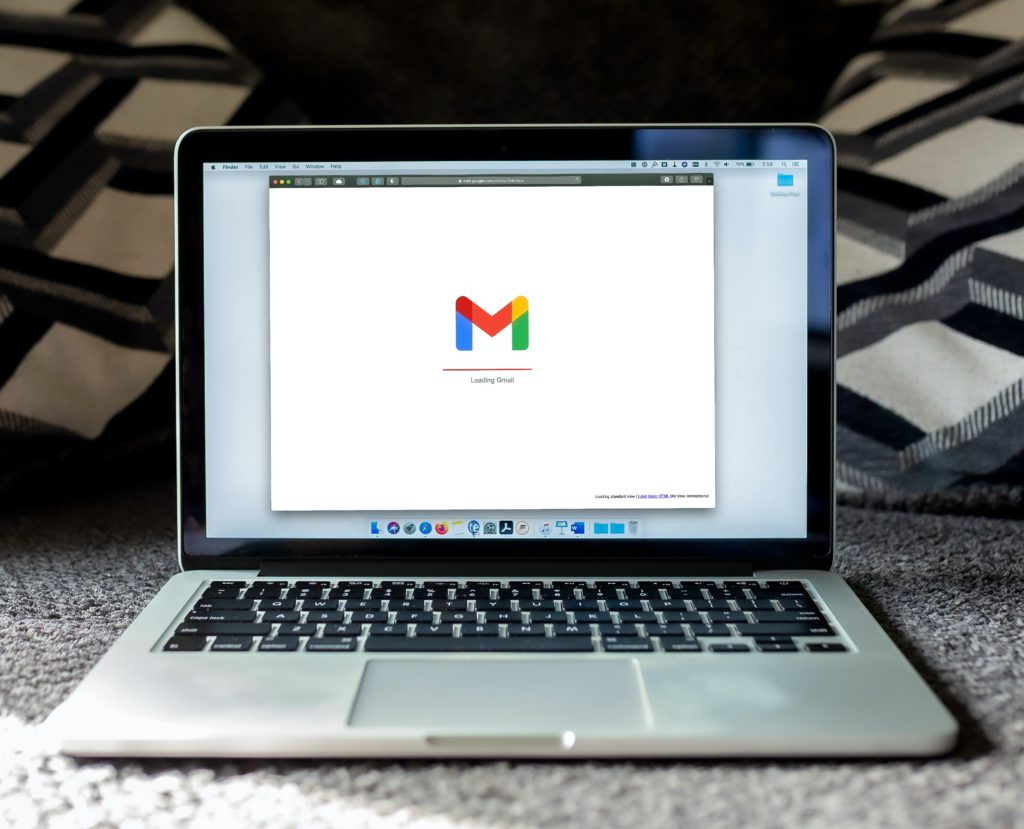79% of companies have increased the use of digital communication channels and adopted new channels due to Covid-19. Organizations are using digital communication channels to announce new discounts and updates. Among the most used channels, emails and video calls shared the top spot at 74% each. And telephones were close at 50%.
65% of marketing professionals have prioritized digital technologies more than what they planned. Companies recognize this shift and are adapting their marketing strategies. For example, the most common channels of choice include SMS and WhatsApp messages.
Digital communication is any type of communication that relies on the use of technology. There are many types of communication as channels. These include email, phone calls, video conferencing, many types of instant messaging like SMS and web chats. Even blogs, podcasts, and videos are considered forms of digital communication.

Communication channels help to build your brand with your audience. It also helps to intensify sales and help you understand their behavior. They function as a bridge between you and your audience. Thus, knowing how to work in each channel is as fundamental as choosing your buyer persona because your digital marketing strategy will be built on that.
There is no specific channel that brings you a bigger and better result. Everything depends on your business and the profile of your customers. But since there are several communication channels, it is recommended that you be in more than one. In this way, the public will have more than one customer service option. Thus, you will have more opportunities to strengthen your relationship with them. Opt for a form of communication that is related to the culture of the company.
It might be tempting to communicate through as many channels as available. But most businesses would enjoy a more calculated and mindful approach. Below are a few things to think about before you select a channel for your business messages.
Take a look at your budget

Your budget will also influence your choice of communication channels. Because you’ll have to invest some money to get your message across, ask yourself: Is the channel affordable given your company’s budget? What tools are available for each channel? If you’re going to use many mediums for business communications, how much money are you willing to invest in each?
Consider your message

The type of message is another thing you should take into consideration.
Ask yourself whether the information is formal or informal? Does it include visuals or text? Is the message time-sensitive or trivial? Does it need to be easy to find later?
Then, zero in on the appropriate communication channels to use. If you’re delivering a presentation, then you might want to take advantage of video conferencing software. Make sure it has a screen sharing feature so you can share different types of reference materials.
Get familiar with your team

It might seem obvious, but the choice of communication channels depends on the preferences of your team. Who are they, and what channels do they engage in? Do they prefer phone calls, text messages, or some other form of communication? You can find this out by conducting an employee engagement survey. Knowing where your team hangs out will help ensure you’re using the proper communication channels to talk to them.
Digital communication is fast, efficient, and convenient. An employee can have conversations in real-time with colleagues or clients from the opposite side of the world without leaving their desk. Company leaders can use digital channels to communicate with their entire global workforce at once. And use corresponding channels to collect feedback from those employees.
Most current marketing initiatives can be viewed as digital communication. Social media campaigns and video ads are a way for companies to mass communicate.
Looking at all the business areas that involve digital communication, it’s safe to say that modern technology has vastly improved the way companies operate. With easy and accessible ways to communicate, employees can spend their time focusing on more critical tasks.
Advantages of Digital Communication
As the business world embraces digital communication, a few disadvantages have emerged from its use. Having constant access to communication tools can make it hard for employees to disconnect at the end of the workday. Email notifications and pings from work apps follow them home through their smartphone. Thus it blurs the line between work life and personal life. Without having a chance to unplug, employees are more likely to experience burnout and other signs of overworking themselves.
Digital communication has also presented security challenges for many companies. Hackers can make their way into virtual meetings and hijack the calls, or email phishing opens a door for the entire organization’s online systems to be compromised. Every time company data is transmitted over the internet, there is a risk that this information won’t remain private.
Communication channels help you build and establish your brand with your consumer. You can do this by increasing sales and contributing to helping you understand your audience’s behavior. They create a bridge between you and your audience. So, knowing what they are and how to work with each channel is as essential as choosing your persona because this will be the foundation for your digital marketing strategy.
There is no specific channel that will bring you more outstanding and more significant results. It will all depend on your business and your customers’ profile. But since there are several communication channels, it’s recommended that you have more than one channel. This way, your audience will have more than one customer service option. And, you’ll have more opportunities to strengthen your relationship with them.
Choosing the correct communication channels for each situation is crucial for the success of your business. You’ll have to use more than one channel. After all, your audience might be on all of them, and you’ll never know if you don’t use them. But if you work alone or still don’t have a team to help you on each channel, don’t try to use them all.
It’s essential to be able to answer your customers’ questions and receive their suggestions. And when you have many communication channels, this can become an arduous task that’s hard to control.
Outline strategies

Keep an eye on all communication channels used to always keep them updated. It’s essential to add new content at least once a week and have an editorial calendar to help you with this.
Research

Create a daily reading routine to stay informed about the main events of your digital market. This will help you when it’s time to produce content. Manage all of your communication channels. It’s very easy to forget about a communication channel, which will make your customers’ messages accumulate. To keep this from happening, create a management routine and check all comments that your business receives.
Identify your persona

A persona is a fictional character that represents your ideal customer. It’s the sum of all characteristics of the people to whom you intend to direct your product or service. Unlike a target audience, when we create a persona, we look for more detailed characteristics, such as habits, personality, desires, and needs. The creation of the persona will direct your product to the right people, in addition to showing which communication channels your audience uses the most. Thus, you’ll understand where you need to be present to talk to your audience.
Social Media

72% of U.S. adults use social media, with Facebook, YouTube, Twitter, Instagram, and LinkedIn being the most popular platforms. Social media allows people worldwide to connect with friends, family, celebrities, and brands through bite-sized textual and visual content. Social media is the top-ranked channel for connecting with customers, and 57% of customers will increase their spending if they feel connected to a brand.
As Forbes reports, brands can use YouTube to build web series, partner with influencers, create how-to videos, give behind-the-scenes looks at their processes, and repurpose website content. Since Google owns YouTube, brands should also consider using search engine optimization tactics, so their videos show up in search results.
Facebook is also effective for building an engaged social community, either through an official brand page or relevant groups. Brands would be wise to invest in native video, which founder Mark Zuckerberg hopes will “encourage meaningful social interactions.”
70% of consumers feel more connected to a brand when its CEO is active on social media. As a business-to-business (B2B) social network, LinkedIn is useful for connecting with other companies, sourcing new hires, and engaging in thought leadership. Executives, for example, can use LinkedIn to create blog posts pulling back the curtain on their brand and engage with other experts in their field.
Instagram provides a hub for fashion, beauty, and celebrity content. Most brands use Instagram Stories, ads, and IGTV for long-form videos to reach audiences. Parent company Facebook reported that 66% of Instagram users connect with brands on the visual platform.
Twitter is also a go-to platform for customer service, as many brands have created separate customer care accounts for inquiries. Brands and consumers use the platform to live-tweet their favorite events, follow and contribute to trending hashtags, and connect one-on-one through public interactions or direct messages.
Email Marketing

Many businesses with in-house digital marketers use email marketing, with up to 66% rating this tool as excellent for delivering ROI.
Email is the currency of the web, and anybody online has an active email address. And while Facebook and Twitter might seem pretty ubiquitous, the ongoing struggle over data breaches and privacy means plenty of people are exiting some social media channels. So when it comes to connecting with your prospects and customers, there’s no channel with a wider reach than email.
And when it comes to conversions, there isn’t a more powerful channel than email. The average click-through rate of an email campaign is around 3% of total recipients, whereas the average click-through rate from a tweet is around 0.5%.
This means you are 6x more likely to get someone to click through to your website via email than you are from Twitter. As discussed earlier, your email subscribers have told you they want to hear from you, which isn’t typically the case with social media.
Blogs

It is possible to build a cycle of publications with blogs and create new ways of approaching your audience. The idea of the blog is to expose your knowledge showing not only the subject in which you have recognized authority but also covering general topics of interest to your audience.
It is crucial to keep the blog constantly updated. In this way, you create a dynamic since your audience knows that you will always publish texts. That increases your visibility, loyalty to your visitors and conquers the confidence of your client.
Websites

Whatever the size of your company, a website can give your business the online presence it needs to communicate and/or sell to prospects. And 69% of Americans have purchased an item from the website.
Your company website serves as a prerequisite for your business. It is where customers go to judge whether you’re credible or not, and it’s also one of the most impactful customer-facing communication channels at your disposal. As such, you want to make sure you have a user-friendly interface, branded designs, and plenty of customer reviews and testimonials.
Building a website for your business will mean you could potentially reach these otherwise unreachable customers. Your business might be local, but you might have the potential to sell your products or services to a broader market, whether it be people in the next town, the nation as a whole, or even the international market.
Videos

Nowadays, videos aren’t only used to entertain or promote products and services. They are produced and also used for didactical and educational purposes.
Your audience needs to have an authentic experience that is interesting to guide them to the video’s primary objective, which is either selling or informing something.
In addition to being fast and attractive, this type of content facilitates the understanding of the message. As with the communication channels we’ve mentioned, it’s essential to create a content marketing strategy for your video.
Just as the communication channels presented are essential, so is creating a content marketing strategy for your video.
External complaint channels

Since not everything is a bed of roses, it’s common to have unhappy customers that complain about your product or service on communication channels, which you don’t necessarily control.
Websites such as Yelp and Google reviews are used to show this dissatisfaction, and you must know everything that is being posted on them and answer them.
This way, you can understand your customers and can also take action to change their perception of your business.
Phone calls

One of the most common communication channels in business is a phone call. A quick phone call can clear up confusion or convey new information across long distances, and conference calls can allow multiple people to take part and elaborate on their perspectives. Phone calls lack the non-verbal cues of in-person conversations or video-conferencing but may provide a simple, affordable communication channel for customers and employees.
In-person

In-person, verbal conversations are some of the most common and effective communication channels in a business.
Talking to someone in person allows you to use both verbal and non-verbal communication cues, which can help improve the quality and efficacy of your conversations. Since most of our communication is non-verbal, it’s essential to include both verbal and non-verbal cues to reinforce the conversation.
It’s also easier to convey the tone of the conversation when you speak to someone in person. Sometimes, written or digital communication can lack tone, leading to confusion.
Speaking in person, your tone of voice, body language, and vocabulary can bring clarity to the conversation and ensure everyone understands what you’re talking about.
Customer service

This sector, which is often the gateway for the user, goes beyond customer service to clarify their doubts and solve their problems. Quality care transforms customer pain point solutions and can turn a defender of the brand.
In addition to anticipating possible difficulties, you can identify bottlenecks and discover your significant doubts and needs through customer service. You can offer this service via email, phone, or chat.
The important thing is to have a qualified team with a high level of knowledge about your business and provide good service to your customers.
There you have it – nine must-have digital communication tools for modern-day businesses. Implementing these communication tools in your organization can set yourself up for success in an increasingly connected digital world where remote work has become the norm. Remember, your business communications strategy is constantly evolving because information becomes outdated, new information becomes available, and thus new channels emerge.
, October 21, 2021, Team LimeCall

Top rated callback automation platform that connects your website visitors to your team within 20 seconds through phone callback and whatsapp driving upto 40% more conversions.
Learn more